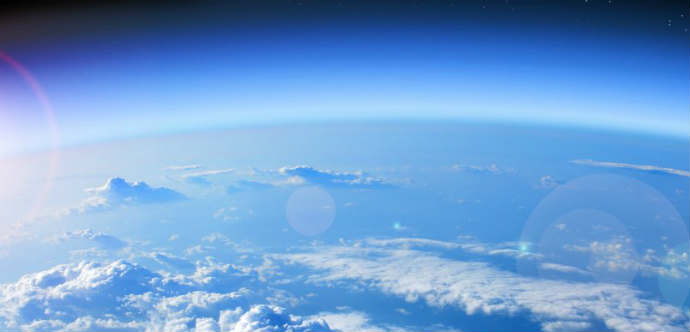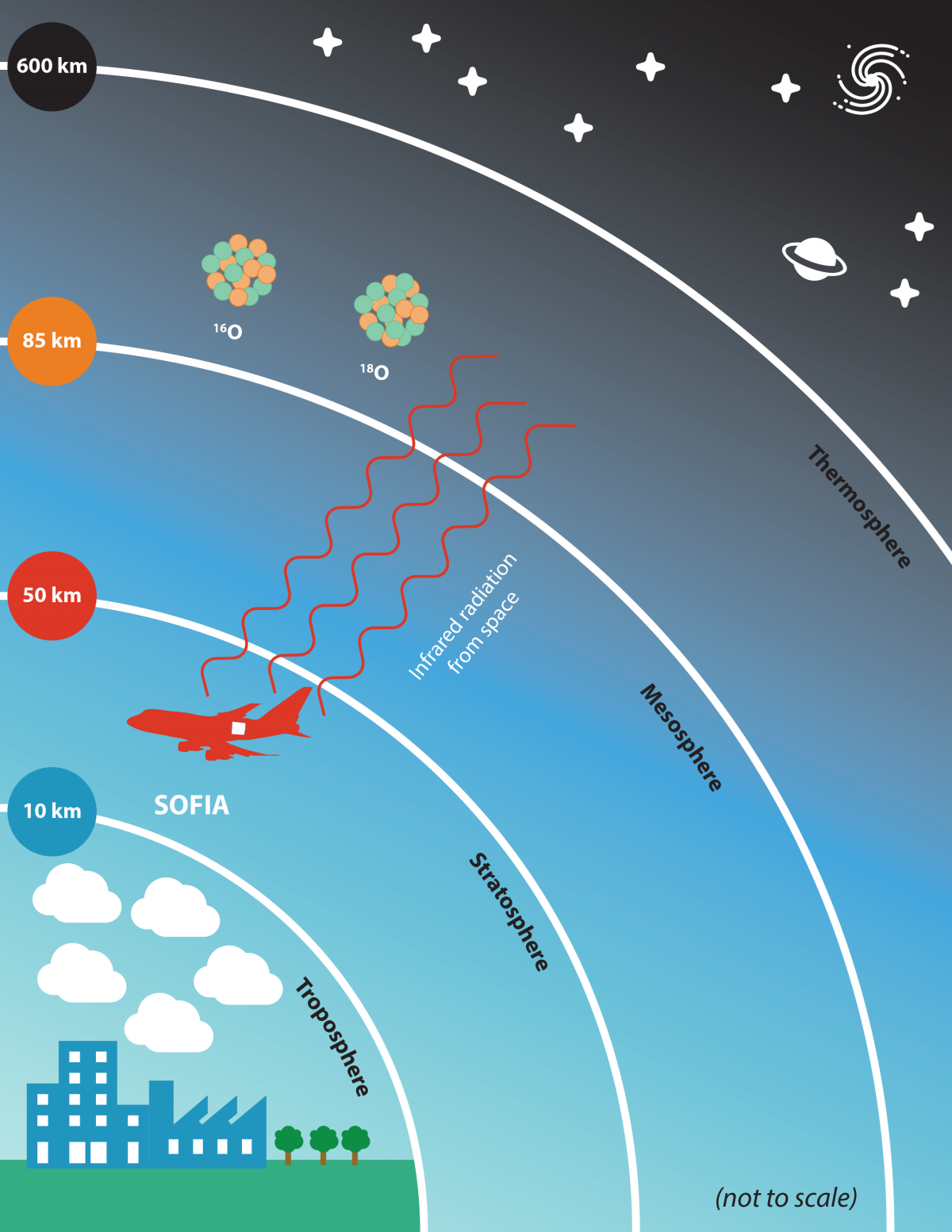 The Stratospheric Observatory for Infrared Astronomy (SOFIA) has made the first-ever measurement of heavy atomic oxygen in Earth’s upper atmosphere:
The Stratospheric Observatory for Infrared Astronomy (SOFIA) has made the first-ever measurement of heavy atomic oxygen in Earth’s upper atmosphere:

Heavy oxygen is so named because it has 10 neutrons , instead of the normal eight in “main” oxygen, the form we breathe. Heavy oxygen is seen as a signature of biological activity, common in the lower atmosphere. Both forms are byproducts of photosynthesis, but the main oxygen is consumed by respiration of living things more than its heavy counterpart, leaving behind a higher concentration of heavy oxygen.
Little is known, however, about how this abundance of heavy oxygen permeates from the location of its near-ground creation into the uppermost regions of the atmosphere. With its high spectral resolution, SOFIA ‘s GREAT instrument measured the ratio of main to heavy oxygen in the mesosphere and lower thermosphere, making it the first spectroscopic detection of heavy oxygen outside a laboratory.
“It’s tracking biological activity — that’s well demonstrated ,” said Helmut Wiesemeyer , a scientist at the Max Planck Institute for Radio Astronomy . “Until now, the altitude at which this signature extends was thought to be 60 kilometers [about 37 miles] – so, just the bottom of the mesosphere – and the question was, does it reach higher altitudes? And if it does, since there are no living organisms up there, the only way to reach higher altitudes would be efficient vertical mixing.”
In other words, the only explanation for the large concentrations of heavy oxygen in these regions is the up and down movement of air, which may have important implications for climate change. Measuring heavy oxygen is complex because it looks so similar to core oxygen. From high in the stratosphere, SOFIA could separate the two against a lunar background: the brightness of the Moon allowed for maximum sensitivity to these hard-to-distinguish features. This allowed the researchers to measure the main oxygen-to-oxygen ratios up to 200 kilometers into the atmosphere. The findings – published in Physical Review Research – ranged from a 382 to 468 factor difference in the two types of oxygen, similar to the ground report.
“There are processes that are altering these relationships. For Earth, this process is oxygenated life ,” Wiesemeyer said, although there are other potential chemical explanations to consider as well. Wiesemeyer and his collaborators were very conservative in their uncertainty estimates, so they cannot fully attribute their oxygen measurements. heavy to biology.The solar wind, for example, can also supply heavy oxygen to the Earth, but it is unlikely to make such a large contribution.
This pilot study measuring the balance between the two forms of oxygen demonstrates a technique atmospheric scientists could use to study vertical mixing. The study results may also help to better define a biologically relevant boundary of the Earth’s atmosphere. More ambitiously, future instruments that could be sensitive to various oxygen signatures have the potential to use similar techniques to measure oxygen ratios in exoplanets. A combination of high oxygen abundances with an understanding of vertical mixing on these exoplanets could indicate biological activity, though the team cautions that such a study would require enormous sensitivities that current technologies lack.
“The idea is to first figure out what’s going on in front of your door before delving into it elsewhere,” Wiesemeyer said . These observations are too low even for low-orbiting satellites, but too sensitive to be made from the ground. Stratospheric balloon-based observations may be able to offer potential follow-up studies in the future.
SOFIA was a joint project of NASA and the German Space Agency at the DLR. DLR provided the telescope, scheduled aircraft maintenance, and other mission support. NASA Ames Research Center in California’s Silicon Valley managed the SOFIA program, science and mission operations in collaboration with the Universities Space Research Association, based in Columbia, Maryland, and the German SOFIA Institute at the University of Stuttgart. The aircraft was maintained and operated out of NASA’s Armstrong Flight Research Center Building 703, in Palmdale, California. SOFIA reached full operational capability in 2014 and completed its last science flight on 29 September 2022.









